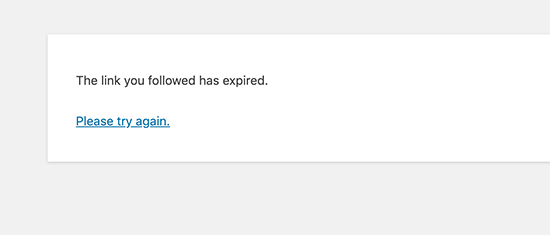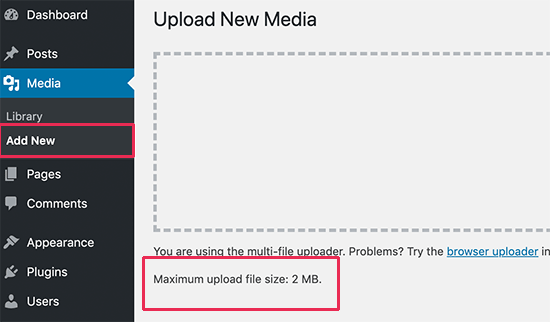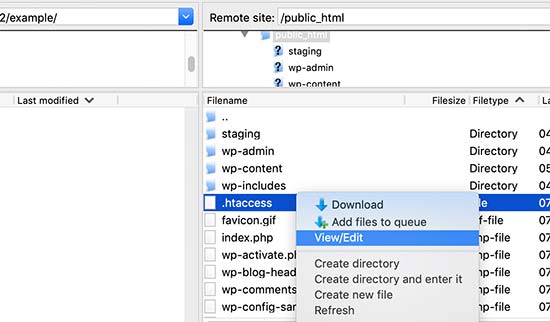Free tool to check and repair bad sectors for hard drive, external HDD, SD card, flash drive | How to check and repair bad sectors?
Overview on bad sectors
What is a hard drive bad sector?
A bad sector is a sector on a hard disk that cannot be used due to permanent damage (or an OS inability to successfully access it), such as physical damage to the disk surface (or sometimes sectors being stuck in a magnetic or digital state that cannot be reversed) or failed flash memory transistors. Something weird will happen if the hard disk has bad sectors, for instance, operating system cannot boot normally; hard disk can't be formatted; when you open a file, error is reported. These phenomena show that there must be bad sectors on the disk. In fact, it is very common that disk used for a long time has bad sectors. There are two types of bad sectors – physical (hard) and logical (soft) bad sector.
Physical / hard bad sectors are a cluster of sectors of the hard drive that are physically damaged. If a hard drive's head touches the rotating plater, that area will be damaged. For example, your computer gets bumped while its hard drive is writing data, hard disk is exposed to extreme heat, or some mechanical part fails, all these are likely to cause hard bad sectors. As to solid-state drive, bad sectors are the result of worn out flash memory cell or other defects. This type of bad sector cannot be repaired, but it can be prevented.
Logical / soft bad sectors are sectors on hard drive that appear to not be working properly. When operating system tries to read or write data stored on these sectors and finds error correction code (ECC) which does not match content of the sector, that indicates that something is wrong and these sectors may be tagged as bad sectors. Soft bad sectors are repairable by overwriting on disk with zeros, which can be done by bad sector repair software such as DiskGenius.
How do I know if my hard drive has bad sectors?
Hard disk might be one of the most fragile hardware among computer components. If not taken proper care, data would be at the risk of loss. Likewise, everything else, hard drive bad sectors give signs and symptoms. If you know the warning signs beforehand, you have a good chance to prevent disaster. Let's look at some signs telling hard disk probably contains bad sectors.
Drive becomes RAW and inaccessible. When you try to access it, you receive error messages such as "Location is not available. Drive: \ is not accessible. Data error (cyclic redundancy check)".
It takes a long time to run a program or read data, or software stops responding frequently. Computers slows down or freezes when the damaged hard drive in connected.
Hard drive makes strange noises when computer boots or you try to access data in this disk.
When you want to perform a quick format to the device, formatting fails with error message "Windows was unable to complete the format".
Windows keeps popping up a messaging telling "Windows detected a hard disk problem" and suggesting backing up data.
Windows slows down and BSOD. Computer takes ages to start up or system booting always ends up with a blue screen of death.
S.M.A.R.T. information. There are tools that can read S.M.A.R.T. data of hard drive. If it shows the hard drive is failing, the disk is likely to have bad sectors.
What can cause bad sectors in a hard drive?
Sectors on hard drive can easily get damaged due to all kinds of reasons. Bad sectors are no longer available for data storage and cause data loss most of times. To prevent bad sectors, you need to know the most common reasons behind it. Here are some factors that can cause bad sectors:
Aging devices: Like other electronic devices, hard drive has an expected life span. If your hard drive has been used for a long time, it is likely to be wearing out and bad sectors might have been created over time.
Turn off computer improperly: Platters in hard drive rotate in a high speed when working, as heads have to read data from different location on the disk. When sudden power failure or improper system shutdown happens, heads in hard drive will be forced to back to situ. During this process, head is likely to touch or rub disk platters, damaging that area and causing bad sectors. In a similar way, if external hard drive is unplugged from computer directly without using safely removing hardware, bad sectors are likely to be caused.
Shaking or knocking: Though many manufacturers have tried their best to enable to enable the shock-resistant function, it does not mean you no longer need to worry about shacking or striking. Dropping hard drive or laptop to floor, excessive collision or knocking, especially when disk is working, can lead to severe physical bad sectors.
Poor quality: Hard drives with low quality tend to have shorter overall lifespan and develop bad sectors. Such kind of hard drive probably contains bad sectors when it is produced.
Dust: Working in a dusty environment is one of the most common causes that are often overlooked by users. As heads are very close to disk platters, if any dust falls into the disk, bad sectors will occur soon.
Check and Repair Bad Sectors
Free software to check and repair bad sectors
Is it possible to check or repair bad sectors on hard drive and USB drives? The answer is YES. There are bad sector check and repair tools online, and you can download one of them to help you perform a surface scanning. Besides, it is still possible to recover files from a damaged hard drive caused by bad sectors. Let's see a free bad sector repair tool – DiskGenius Free Edition.
DiskGenius Free Edition, compatible with all Windows editions, enables you to find out whether hard disk has errors. It is able to check and repair bad sectors for hard drives, SSD and USB storage devices such as external hard drive, SD card, USB flash drive. Meanwhile, it is free partition manager and data recovery freeware, which is trusted and recommended by millions of users.
As we all know, bad sector repairing damages data, thus you should backup or recover data beforehand. DiskGenius provides data backup and data recovery features, thus you can back up important data and save lost data, such as clone damaged disk, create a sector-level image for disk or partition, recover data from RAW drive or unallocated disk, restore lost partitions, etc.
How to check bad sectors for hard drive or USB drive?
Step 1 Start DiskGenius Free Edition on your computer, select the disk that needs checking bad sectors, and click item Verify or Repair Bad Sectors under Disk menu, as below:
check and repair bad sectors
Step 2 Click Start Verify button on the "Bad Track Verification" dialog box, and DiskGenius starts to perform a surface scanning to find bad sectors.
Before you get started, you can set timeout value or scanning cylinder range by entering exact value. If you are not an expert and have no ideas about these settings, you can just follow default value.
check and repair bad sectors
Step 3 While verifying bad sectors, DiskGenius displays detailed information of hard drive sectors. Sectors marked by red blocked means damaged, and these are bad sectors. Severe does not mean bad sector, but it is likely to turn to bad sectors in the future.
check and repair bad sectors
Step 4 When scanning completes, DiskGenius reports how many bad sectors are found. You can click Save Report button to save the scanning result.
check and repair bad sectors
Note: If you want to check bad sectors for system disk which installs Windows operating system, you should use DiskGenius WinPE edition to complete the task in order to get a more accurate test result. To access DiskGenius WinPE Edition, you can either boot to WinPE from Windows directly (click "File" menu > choose "Reboot to DiskGenius WinPE version") or create a bootable USB disk.
How to repair bad sectors using free bad sector repair tool?
Important:
Checking bad sector is read-only process and does not affect disk itself or files on hard drive, however, repairing bad sector is a different story. Before trying any bad sector repairing solution, make sure you have a good backup of your files on the damaged disk, as repair action probably result in the loss of files or corruption of file system.
Repairing bad sector is of no help to data recovery. The bad sector repair destroys data on the disk; more exactly, it destroys data on bad sectors or near bad sectors. Thus, you need to back up data before the bad sector repair. It is common that the disk cannot read data due to bad sectors, and in such a condition, you need to recover data first instead of doing the bad sector repair.
Not all bad sectors are repairable such as physical bad sectors. If DiskGenius cannot repair all bad sectors on your hard drive, you can isolate bad sectors by creating a partition on the disk area that contains bad sectors and hiding the partition with the help of DiskGenius.
Step 1 Click Repair button if you want to repair bad sectors on the "Bad Track Verification" window.
Step 2 You'll receive a warning that asks to back up data first. If you have created a backup for important data, click OK button. If not, click Cancel and backup your files.
check and repair bad sectors
Step 3 Another warning message from DiskGenius, which tells repairing bad sectors does not equal to recovering files and you should recover data first.
Click OK if file recovery is not needed. If you want to recover data, you should click Cancel and use File Recovery function to scan the disk to find lost data.
check and repair bad sectors
Step 4 When the repairing process completes, you will receive following message. Click OK button and close the software.
check and repair bad sectors
Questions and answers about bad sectors
1. Why hard drive gets bad sectors?
One of the reasons is that hard disk has bad sectors when it is manufactured; experienced data recovery engineers know which disk is likely to have bad sectors judging by its brand, manufactured time, working hours, etc. Another reason is the improper operations such as unduly defragment.
2. Do I need to fix bad sector issue as soon as possible?
Yes! It will become a vicious circle if you do not fix bad sectors timely, because that may cause more bad sectors. Therefore, you'd better detect bad sectors regularly and do bad sector repair timely. Meanwhile, though bad sectors are fixed, the disk is riskier of getting bad sectors than normal ones. So, you should be cautious when you use a disk that had bad sectors before and do not save important data on it. The logical bad sector can be fixed, while the physical bad sectors cannot be repaired, but usually they can be remapped. Bad sector repair and detect software can detect bad sectors, repair logical bad sectors, and remap physical bad sectors.
3. Can bad sectors be fixed via low-level formatting (LLF)?
Low-level formatting can be used to fix server bad sectors. However, the low-level formatting is a double-edged sword; it can fix bad sectors as well as do hard to hard disk, especially when the hard disk has physical bad sectors. Thus, the low-level formatting is the last choice of bad sector repair.
4. Is it possible that a new hard drive contains bad sectors?
It is barely known that when a hard disk is manufactured, there are areas on the platter that have bad sectors! These bad sectors, hidden in P-LIST and G-LIST, will not affect normal use and they can't be accessed by common software either. G-LIST can store several hundred bad sectors and the P-LIST can store about four thousand bad sectors. For more information about G-LIST and P-List, please read related articles. One thing to note if your hard drive contains irreparable bad sectors, it is not advised to store importance data on that disk for data security reasons.
Conclusion
It is a common occurrence that your hard drive or other storage devices develop bad sectors, and there is no need to be panic when you run into such issues. You can use DiskGenius Free Edition to easily check or repair bad sectors. In addition, do not forget to create backups for important files and keep backups on different disks in case that one of them fails to work.
Free tool to check and repair bad sectors for hard drive, external HDD, SD card, flash drive | How to check and repair bad sectors?





























